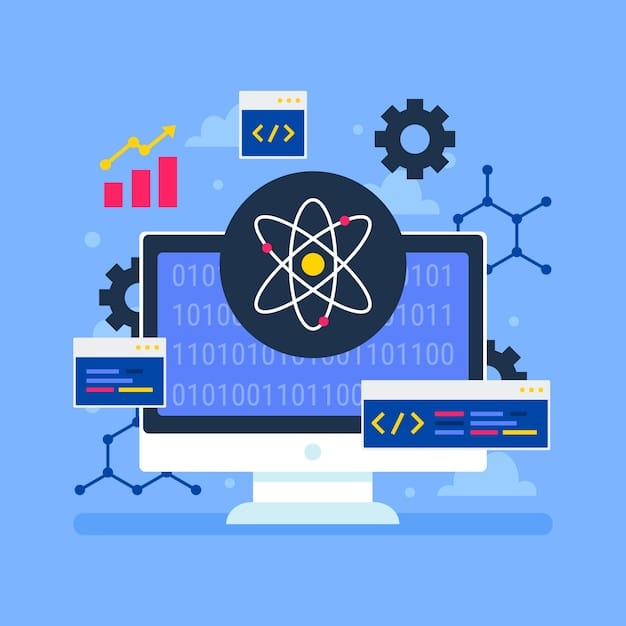Essential Science Lessons Every Middle Schooler Should Know
Introduction to Engaging Science Lessons for Middle Schooler
Remember the days when kids were glued to the Discovery Channel, wide-eyed and full of questions? Let’s channel that same boundless curiosity into science lessons that turn every middle schooler into a mini explorer of the natural world!

Middle school marks a critical time in a student’s academic journey, especially in science education. It’s a time when young learners dive deeper into exploring the natural world, developing skills to analyze data, evaluate relationships, and solve problems. Students can understand complex systems, build connections, and expand their curiosity through engaging science lessons for middle schoolers aligned with the curriculum.
In writing this blog, let's explore some ideas for how educators and parents can use hands-on lesson plans, experiments, and innovative tools, such as online science lessons, to make science engaging for middle school students. By focusing on key science topics for middle schoolers and emphasizing interactive approaches, we aim to inspire the next generation of scientists and innovators to explore the mysteries of the universe and drive discoveries forward.

Choosing the Best Science Lessons for Middle Schoolers
Key Criteria for Selection
The right science lessons for middle school should meet several criteria:
Alignment with Standards: Following frameworks like the Next Generation Science Standards ensures that lessons cover essential science content while fostering critical thinking.
Engaging Activities: Hands-on labs, experiments, and lesson plans help students better understand key concepts.
Real-World Applications: Whether learning about the atmosphere, ecosystems, or physics, lessons should connect the classroom to the world outside.
Interactive Learning Tools
Incorporating tools like videos, charts, and materials can enhance understanding. For example:
Use simulation programs to model planetary motion in the solar system.
Introduce biology through dissection kits or virtual labs.
Create experiments to identify properties of matter, such as density or states of matter.
These approaches encourage students to practice scientific skills, measure results, and explore different science topics for middle schoolers while keeping the process fun.
Essential Science Lessons for Middle Schoolers
Middle school science curriculum lays the groundwork for more advanced subjects. Let’s dive into the most crucial science lessons for middle schoolers, exploring key science topics for middle schoolers that every student should learn.
Life Sciences
Understanding life processes, ecosystems, planets, space and organisms is at the core of the middle school science curriculum:
Ecosystems: Study food chains, energy flow, and ecological balance.
Activity Idea: Build a terrarium to observe relationships within a miniature ecosystem.Biology: Explore plant and animal anatomy, genetics, and cellular structures.
Experiment: Create a DNA model using household materials.Connection: Teaching the relationship between organisms helps students evaluate patterns in the natural world and expand their knowledge.
Middle School Science Curriculum – Homeschool Resources
As someone who loves exploring creative teaching methods, I find homeschooling middle school science exciting and rewarding. With the right resources, like MUA Academic Science Programs, I can confidently guide middle school students through essential science topics for middle schoolers while keeping things engaging and hands-on. From the fascinating layers of the Earth to the formation of soil, these science lessons don’t just teach—they ignite curiosity about the natural world.
When I teach Earth Systems, I love pairing science lessons with fun, interactive activities. Recently, I helped my students create a plate boundary model using clay and food colouring to show how tectonic plates move and collide. We even layered sand, pebbles, and dirt in jars to replicate soil layers, discussing sustainability along the way. These activities make it easier to identify key concepts while analyzing data in a fun and memorable way. I genuinely enjoy watching their faces light up with “aha” moments during these experiments, making science lessons for middle schoolers engaging and impactful.
Earth Systems
Teaching Earth Systems is one of my favourite middle school science curriculum parts. I believe in making science personal and relatable, so I like to draw connections between classroom lessons and real-world applications. For example, when we explore volcanoes, rock cycles, and plate tectonics, I encourage my students to think about how these processes have shaped their world.
One of my go-to activities is creating a mini volcanic eruption using baking soda and vinegar. I also enjoy guiding students as they search for and classify different types of rocks during a backyard scavenger hunt. These hands-on experiences help middle school studentsunderstand Earth’s processes and evaluate how natural phenomena interact. It’s so fulfilling to see my students recognize the intricate relationships between Earth’s systems and realize how those patterns connect to their daily lives.
Inspiring Science Topics for Middle Schoolers: Ideas to Engage
When I plan my middle school science lessons, I always aim for the "WOW" factor. Why? Because I know firsthand how much students thrive when engaged and excited. Whether diving into physical sciences like motion or chemistry, or exploring Earth science topics like the atmosphere and weather systems, there are countless ways to keep learning fresh and fun.
For instance, I’ve seen how impactful it can be to let kids create their experiments. Recently, I had my class design a model ecosystem using a shoebox, plastic animals, and natural materials from their surroundings. Not only did they learn about ecosystems and energy flow, but they also practiced using tools to measure, evaluate, and observe. I even use pacing guides to ensure we cover essential topics while leaving room for spontaneous exploration.
If you’re like me and love sharing exciting new ideas with your students, this list is a goldmine. Bookmark it, pin it, or write down your favorites—it’s the kind of resource I wish I had when I first started teaching. With a little creativity and the right lesson plans, every student can discover the magic of science in their way.
FYI: A jist about it in detail:
Earth Science
In North Dakota, students can explore the wonders of earth science, from studying the ecosystems of the Great Plains to analyzing the properties of soil and its role in agriculture, all while aligning with the next-generation science standards. Engaging with Earth science opens students' eyes to discoveries about geology, weather patterns, and solutions to environmental conservation:
Geology: Understand rock formations, Earth’s layers, and plate tectonics.
Activity: Make a mini volcano to observe eruptions.Atmosphere and Weather: Study climate change, the water cycle, and weather systems.
Engage: Create a weather chart to track daily patterns.Connection to Life: Lessons in Earth science emphasize the importance of protecting the planet, making science personal and impactful.
Physical Science
In the course this category program, students learn to understand laws of motion, energy transformations, and properties of matter:
Physics and Motion: Study Newton’s Laws with toy cars or pendulum experiments.
Program Idea: Build a balloon rocket to explore action and reaction forces.Energy: Teach energy conversion with fun experiments, like powering a small motor using batteries.
Chemistry: Introduce students to basic chemical reactions and the periodic table.
Experiment: Mix baking soda and vinegar to observe gas production..
Chemistry Basics
Science lessons on chemistry are essential for igniting curiosity in middle school students. These lessons often begin with exploring the properties of matter, chemical reactions, and the periodic table. Imagine your child discovering why certain materials react with each other or learning how to make elephant toothpaste in a hands-on experiment.
Activities like these engage students and help them develop their scientific method skills by formulating hypotheses and analyzing results. Educators can use videos, lesson plans, and interactive labs to make learning fun and memorable. Understanding chemistry not only broadens students' knowledge of the natural world but also prepares them for future middle school science curriculum topics.
Space Science
Astronomy captures the imagination of middle school students, helping them understand the universe:
Solar System: Teach about planets, stars, and galaxies.
Activity: Build a solar system model using foam balls and paint.Astronomy: Use telescopes or apps to observe celestial objects.
Explore: Chart constellations to see how patterns in the sky change over time.
Astronomy
Astronomy introduces middle schoolers to the wonders of space and the solar system. From identifying constellations to understanding planetary motion, students explore the universe while applying next generation science standards. Teachers can incorporate engaging lesson plans where students build solar system models, measure distances between planets, or even simulate atmospheric conditions on other planets.
These activities help them evaluate patterns and relationships in the cosmos while connecting science to real-world applications. As middle schoolers engage with these concepts, their curiosity about Earth’s place in the universe deepens, inspiring them to explore and make future discoveries.
Matter Science
In middle school, science lessons about matter lay the foundation for understanding chemistry and physics. Students learn to identify the properties of solids, liquids, and gases while exploring different types of matter transformations through interactive experiments.
For example, using simple materials, they can study the laws of conservation by observing how mass remains constant during a chemical reaction. These hands-on activities not only teach students to evaluate data and analyze relationships but also make abstract ideas like density or viscosity tangible. With tools like charts, experiments, and resources that connect concepts to everyday life, matter science encourages students to expand their understanding of the natural world and equips them with skills to solve real-world problems.
Scientific Method
The scientific method teaches students to identify problems, make solutions, formulate hypotheses, and test their theories:
Steps to Follow: Observation, hypothesis, experimentation, and analysis.
Practice: Conduct surveys and analyze data using graphs and charts.Benefit: It trains middle school students to think critically and evaluate the results of their experiments.
Benefits of Interactive Online Science Lessons For Middle Schoolers
Flexibility and Accessibility
Online course platforms allow science lessons formiddle schoolers to learn at their own pace, ensuring they grasp key concepts like earth science or physics.

Engaging Resources
Platforms offer rich learning resources, including interactive videos, lesson plans, other resources and virtual labs that make learning fun. For example:
Simulations that model planetary motion.
Virtual dissections for understanding human anatomy.
Practical Applications
Online science lessons bridge the gap between theory and practice. By incorporating tools like gamified lessons, educators help students connect abstract concepts to real-life situations.
Conclusion
Science education during middle school is about more than memorizing facts and writing them down; it’s about inspiring curiosity, fostering critical thinking, and encouraging students to explore the world around them. By integrating science lessons for middle schoolers, fun experiments, online tools, and hands-on lesson plans, educators and parents can create meaningful connections between the after-school classroom and the universe.
So, what exciting science experiment will you try with your middle school students today?
Final Words on Online Science Lessons for Middle Schoolers
Codeyoung is an exciting platform where middle school students can dive into the world of coding, perfectly aligned with the middle school science curriculum. Offering lesson plans that explore various topics, from earth science to biology and even space, allows students to explore the natural world through interactive experiments and fun coding challenges. Whether learning to analyze data, create games, or design their simulations, students engage with science content that helps them understand the scientific method and the laws that govern everything from motion to the solar system.
As someone passionate about helping kids unlock their full potential, I find that blending science and coding is one of the best ways to spark their curiosity. That’s why I love Codeyoung – it’s not just about learning to code; it’s about exploring the world around us.
Through Codeyoung, middle school students can dive into everything from the solar system to biology, all while building coding skills that will serve them for years to come. I’ve seen firsthand how kids light up when they analyze data, measure their results, and create something all on their own. Whether they’re experimenting with motion in physics or studying ecosystems in earth science, Codeyoung makes it so much fun to learn. It’s the perfect mix of hands-on learning and technology, and I truly believe it’s helping to shape the next generation of scientists, innovators, and problem-solvers. I can’t wait to see where their curiosity takes them next!
Science Lessons for Middle Schoolers - FAQs
What are the most important science topics for middle schoolers?
Middle schoolers explore foundational topics like life science (cells, ecosystems, genetics), earth science (weather, water cycle, plate tectonics), and physical science (matter, energy, forces). They also dive into astronomy (solar system, space exploration) and develop critical skills through the scientific method. These topics spark curiosity and build a strong base for future learning!
How can online science lessons help middle school students?
Online science lessons open a world of possibilities for middle school students. They offer flexibility, allowing kids to explore at their own pace and revisit tricky concepts until they click. Plus, many lessons incorporate interactive tools like simulations and virtual labs, making abstract ideas come to life. Imagine experimenting with chemical reactions or exploring the solar system without leaving your home—it’s like having a science lab in your living room! These lessons also cater to different learning styles, whether your child thrives with videos, quizzes, or hands-on activities. It’s not just learning; it’s an adventure that sparks curiosity and builds confidence.
What are some fun science experiments middle school students can try?
Science experiments are where the magic happens! Here are a few crowd-pleasers:
Volcano Eruption: A classic baking soda and vinegar reaction that never gets old. Add food coloring for a lava effect!
DIY Lava Lamp: Combine oil, water, and a fizzy tablet to create a mesmerizing lamp that teaches density.
Invisible Ink Messages: Write with lemon juice and reveal secrets by heating the paper—a spy-worthy experiment!
Static Electricity Balloon: Rub a balloon on your hair and watch it pick up small paper bits or make your hair stand.
Grow Your Own Crystals: Dissolve sugar or salt in warm water, hang a string, and watch crystals grow over days.
These activities aren’t just fun; they make complex science principles easy to grasp.
How can parents support their children in learning science?
Parents don’t need to be scientists to support their kids' love for science. Start by creating a curiosity-friendly environment—answer questions (or explore answers together), and encourage observation. Make science part of daily life: cook together to explain chemical reactions or stargaze to talk about astronomy. Provide resources like books, kits, or apps, and encourage hands-on activities. Celebrate their discoveries, no matter how small, to boost their confidence. Most importantly, show genuine enthusiasm—when kids see you excited about science, it becomes contagious!
What benefits do online science lessons provide?
Online science lessons bring a buffet of benefits to the table. First, they’re super convenient—you can learn anytime, anywhere. They often feature interactive experiments, 3D models, and real-world applications that make science come alive. For shy students, online forums and chat options provide a safe space to ask questions. Many platforms also track progress and tailor content to individual needs, ensuring no one gets left behind. Plus, kids can connect with peers worldwide, exchanging ideas and growing their perspectives. It’s not just learning—it’s a global science adventure!
Are there online science lessons suitable for middle schoolers?
Absolutely! Today’s online platforms are brimming with courses tailored specifically for middle schoolers. Sites like Khan Academy, National Geographic Kids, and Mystery Science offer age-appropriate content that balances fun with learning. These lessons are designed to simplify complex topics, using games, videos, and experiments to keep young learners engaged. Whether your child is curious about space, biology, or chemistry, there’s something out there to match their interests. And the best part? Many of these lessons are designed to make kids feel like scientists, not just students.
What science subjects are taught in middle school?
The middle school science curriculum typically includes earth science, life sciences, physical sciences, and basic chemistry. Students in earth, might study planets in the solar system, explore the connection between weather patterns and the earth and atmosphere, or practice using the scientific method during experiments. These subjects help students understand the natural world and provide a foundation for the next generation science standards, ensuring they can analyze data, solve problems, and expand their knowledge of scientific systems.